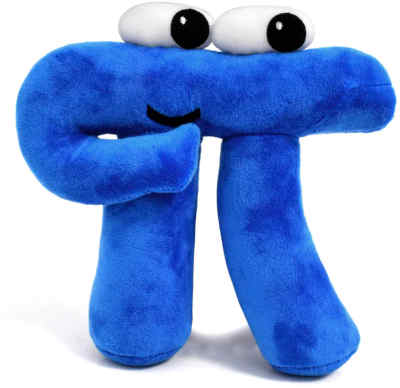At the end of each month I write a newsletter highlighting the most popular posts of that month. When I looked back at my traffic stats to write this month’s newsletter I noticed that a post I wrote last year about how to memorize the ASCII table continues to be popular. This post is a follow up, how to memorize Unicode values.
Memorizing all 128 ASCII values is doable. Memorizing all Unicode values would be insurmountable. There are nearly 150,000 Unicode characters at the moment, and the list grows over time. But knowing a few Unicode characters is handy. I often need to insert a π symbol, for example, and so I made an effort to remember its Unicode value, U+03C0.
There are convenient ways of inserting common non-ASCII characters without knowing their Unicode values, but these offer a limited range of characters and they work differently in different environments. Inserting Unicode values gives you access to more characters in more environments.
As with ASCII, you can memorize the Unicode value of a symbol by associating an image with a number and associating that image with the symbol. The most common way to associate an image with a number is the Major system. As with everything else, the Major system becomes easier with practice.
However, Unicode presents a couple challenges. First, Unicode codepoints are nearly always written in hexadecimal, and so you’ll run into the letters A through F as well as digits. Second, Unicode codepoints are four hex digits long (or five outside the Basic Multilingual Plane.) We’ll address both of these difficulties shortly.
It may not seem worthwhile to go to the effort of encoding and decoding numbers like this, but it scales well. Brute force is fine for small amounts of data and short-term memory, but image association works much better for large amounts of data and long-term memory.
Unicode is organized into blocks of related characters. For example, U+22xx are math symbols and U+26xx are miscellaneous symbols. If you know what block a symbols is in, you only need to remember the last two hex digits.
You can convert a pair of hex digits to decimal by changing bases. For example, you could convert the C0 in U+03C0 to 192. But this is a moderately difficult mental calculation.
An easier approach would be to leave hex digits alone that correspond to decimal digits, reduce hex digits A through F mod 10, and tack on an extra digit to disambiguate. Stick on a 0, 1, 2, or 3 according to whether no digits, the first digit, the second digit, or both digits had been reduced mod 10. See this page for details. With this system, C0 becomes 201. You could encode 201 as “nest” using the Major system, and imagine a π sitting in a nest, maybe something like the 3Blue1Brown plushie.
 For another example, ♕ (U+2655), is the symbol for the white queen in chess. You might think of the White Queen from The Lion, the Witch, and the Wardrobe [2] and associate her with the hex number 0x55. If you convert 0x55 to decimal, you get 85, which you could associate with the Eiffel Tower using the Major system. So maybe imagine the White Queen driving her sleigh under the Eiffel Tower. If you convert 0x55 to 550 as suggested here, you might imagine her driving through a field of lilies.
For another example, ♕ (U+2655), is the symbol for the white queen in chess. You might think of the White Queen from The Lion, the Witch, and the Wardrobe [2] and associate her with the hex number 0x55. If you convert 0x55 to decimal, you get 85, which you could associate with the Eiffel Tower using the Major system. So maybe imagine the White Queen driving her sleigh under the Eiffel Tower. If you convert 0x55 to 550 as suggested here, you might imagine her driving through a field of lilies.
Often Unicode characters are arranged consecutively in a logical sequence so you can compute the value of the rest of the sequence from knowing the value of the first element. Alphabets are arranged in alphabetical order (mostly [1]), symbols for Roman numerals are arranged in numerical order, symbols for chess pieces are arrange in an order that would make sense to chess players, etc.
[1] There are a few exceptions such as Cyrillic Ё and a gap in Greek capital letters.
[2] She’s not really a queen, but she thinks of herself as a queen. See the book for details.
